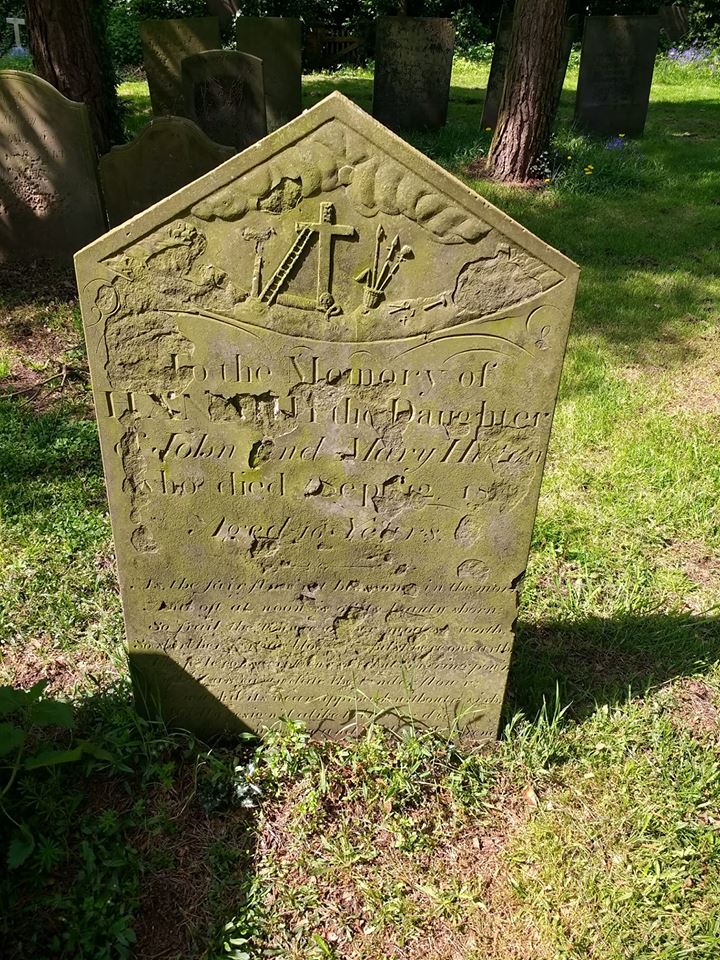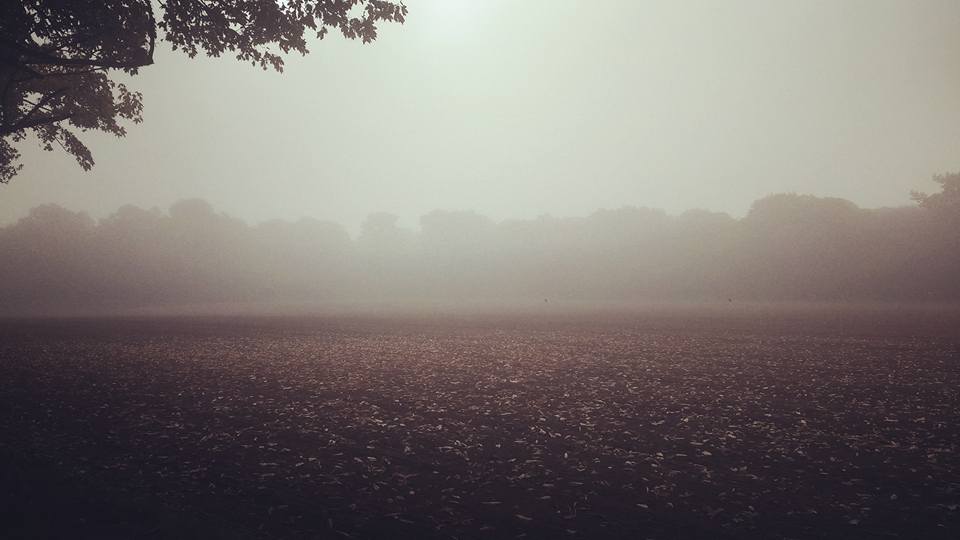Last year, Christine Howles from the Lichfield and Hatherton Canal Restoration Trust and I spent a summer’s evening exploring the Fosseway section of the Lichfield canal. Sharing the photographs on our respective social media accounts generated so much interest that we decided to do it again but with more people and less vegetation.

Christine from LHCRT on our lock crusade
The walk was originally arranged for November but Storm Clodagh had other ideas and so it was on the Sunday after Christmas when sixty five of us gathered outside Sandfields Pumping Station. Dave Moore, stood in front of the door that the Lichfield Waterworks Trust should shortly be getting the long awaited keys to, reminded us all why this building and its contents are such an important part of our local and national heritage.

Despite how this might look, I genuinely never tire of hearing Dave talk about Sandfields. Photograph by Eddie Strain.
Another part of Lichfield’s industrial past once stood somewhere near here, west of the Chesterfield Rd and causing ‘a great nuisance to the inhabitants of the city’, according to the vicar of St Mary’s in 1806. The ‘noisome and offensive’ bone house was described as being to the north of the Wyrley and Essington Canal. Are their histories intertwined in some way? Did the latter provide a transportation link or even a source of power for the former? Whilst we try and flesh out the history of our bone house, it’s worth having a read about Antingham Bone Mill which stood on the North Walsham and Dilham Canal and appears to have been a similar establishment.

Heading along the original route of the canal. Photo by Steve Martin
From Sandfields, we followed the original line of the canal to the start of the Fosseway Heritage Tow Path Trail. At the site of Lock 19, demolished during the building of the Southern Bypass in 2008, LHCRT directors Peter Buck and Bob Williams described the vision that the Trust has for not only the restoration of the canal in this section but also the creation of a moorings site and a wildlife haven incorporating lowland heath and wetland areas.

At the site of the now demolished Lock 19, photo by Dave Moore LWT
It has been reported that a hearth and lead musket balls were found near Lock 19, possibly dating to the Civil War. The source of lead for this mini munitions factory can be found a short way along the towpath, where Peter pointed out the headwall to a culvert carrying a pipe beneath the canal. Not just any old pipe though but one that supplied the city’s Crucifix Conduit with water from the Foulwell Springs at Aldershawe, granted by Henry Bellfounder to the Franciscan Friars in 1301. The original pipe is thought to have been made of alder but was later re-laid in lead which it seems those soldiers may have helped themselves to. In 1805, the lead pipe was replaced by a cast iron one made at the Butterley Company in Derby, brought into the city via the canal and offloaded at Gallows Wharf, just as the Herkenrode Glass, recently reinstalled at the Cathedral, had been two years prior.

Ferreting around up a historic pipe.
At Lock 18, the first site worked on by LHCRT and restored to commemorate the bicentenary of the opening of the canal in 1797, Peter and Bob told us more about the engineering feat that was accomplished here and across the country with tools no more sophisticated than a wheel barrow. Peter told us that during restoration work elsewhere on the route, a brick with a small thumbprint on it was discovered suggesting that children made up part of the workforce. The results of their labour may still be visible but I suspect the details of who they were, where they came from and how they lived, may have disappeared without trace.

Peter Buck and Bob Williams at Lock 18
This section of the Heritage Towpath Trail ends at Fosseway Lane. The bridge here was removed shortly after the canal was abandoned in 1954 and will need to be reconstructed as part of the restoration work. The cottage once occupied by the lock-keeper remains though and still displays the number plate ‘268’ allocated by the Birmingham Canal Navigation Company. We know that in 1923 the cottage was lived in by Mr and Mrs Cass as in October that year, the Lichfield Mercury reported that they had rescued a Hednesford butcher using a canal rake. Charles Peake was driving nine beasts from Tamworth when one broke away near the now demolished bridge. As Mr Peake chased the animal he fell 14ft into the lock. Fortunately, Mr and Mrs Cass heard his shouts and managed to fish him out. Though understandably shaken, Mr Peake was uninjured but the Mercury was concerned others may not be so lucky as on a dark night there was, ‘nothing to prevent anyone who doesn’t know the locality from leaving the road and walking, riding or driving straight into the lock’ and suggested that something should be done to make it safe on the basis that ,’one does not expect to be liable to fall into unprotected death traps in a civilized country’.

An unprotected death trap no more. Photo by Dave Moore, LWT
The Lichfield to Walsall railway line also crosses Fosseway Lane. Although the last train passed by in 2003, the signal box dating back to 1875 remains, albeit in poor condition.

Fosseway Signal Box, Dave Moore LWT
As we gathered on the crossing, I was able to tell people about its keeper Emily who kept watch here every night between 1946 and 1963, thanks to a wonderful article about her life and her work shared on Dave Cresswell’s Rail Blog (here) and Brownhills Bob’s Brownhills Blog (here) a couple of years ago.

“Keep Crossing Clear” Photo by Steve Martin
After trespassing on the railway we headed down Fosseway Lane, stopping just before the junction with Claypit Lane to see Sandfields Lodge, where a private lunatic asylum operated between 1818 and 1856. A series of visits by commissioners in 1846 revealed series of deficiencies in the provision of care at the Sandfields Asylum (you can read a transcript of the Commissioners’ Report here) and it was finally closed in 1856 after having its licence revoked due to the poor conditions. We know that the asylum was transferred here from St John Street and it may be related to the one established on that street in 1775 by a physician named George Chadwick. More research is needed into this and perhaps also into the reasons why by 1788, Chadwick had confined his wife to her room on the basis that she was a ‘lunatic’.
 From Fosseway Lane we walked along Falkland Rd and the new route of the canal to the Birmingham Rd roundabout where a tunnel has been constructed and temporarily buried (see we really do have secret tunnels in Lichfield!). After passing beneath the Birmingham Rd, the canal will cross under the Lichfield to Birmingham Cross City railway line via a new tunnel, scheduled to be constructed at Christmas 2017.
From Fosseway Lane we walked along Falkland Rd and the new route of the canal to the Birmingham Rd roundabout where a tunnel has been constructed and temporarily buried (see we really do have secret tunnels in Lichfield!). After passing beneath the Birmingham Rd, the canal will cross under the Lichfield to Birmingham Cross City railway line via a new tunnel, scheduled to be constructed at Christmas 2017.
With the weather on the turn, the real ales and real fire at the Duke of Wellington beckoned. En-route we passed another old pub, now Redlock Cottage but once known as the Board and later as the Spotted Dog. At this stage though, it was an open pub we were all really interested in. We know the Welly was definitely an inn by 1818 when the landlord is listed as Thomas Summerfield but the early history is sketchy. I have seen it suggested here that it began life in the mid eighteenth century as a slaughter house and only later became an inn to take advantage of the passing trade brought by the canal. It was of course the canal which had brought us here too, for beer, tea, crisps and dog biscuits (Doug the Dog definitely deserved his!). A fitting end to a great walk at the end a great year.

Doug the Dog doing battle with the Falklands Rd Christmas Tree. Both now Lichfield legends in their own right
Thanks to the Lichfield Waterworks Trust, the Lichfield and Hatherton Canal Restoration Trust, Steve Martin and Eddie Strain for the photographs and of course everyone who came along. Happy New Year and here’s to plenty more of this kind of thing in 2016. Make sure you follow us all on Twitter @lichdiscovered and @LHCRT1 and on Facebook here, here and here so you don’t miss out!

Further reading:
http://www.british-history.ac.uk/vch/staffs/vol14/
History of the Trust
History of Sandfields Pumping Station – Cholera in the Black Country
Listed building entry for Sandfields Lodge
Explore the LHCRT Heritage Towpath Trail for yourself here


















 Lichfield Cathedral - Effigy of Captain Stanley: engravingShowing a print of the Stanley effigy. Anonymous.
Lichfield Cathedral - Effigy of Captain Stanley: engravingShowing a print of the Stanley effigy. Anonymous.




































 From Fosseway Lane we walked along Falkland Rd and the new route of the canal to the Birmingham Rd roundabout where a tunnel has been constructed and temporarily buried (see we really do have secret tunnels in Lichfield!). After passing beneath the Birmingham Rd, the canal will cross under the Lichfield to Birmingham Cross City railway line via
From Fosseway Lane we walked along Falkland Rd and the new route of the canal to the Birmingham Rd roundabout where a tunnel has been constructed and temporarily buried (see we really do have secret tunnels in Lichfield!). After passing beneath the Birmingham Rd, the canal will cross under the Lichfield to Birmingham Cross City railway line via 






